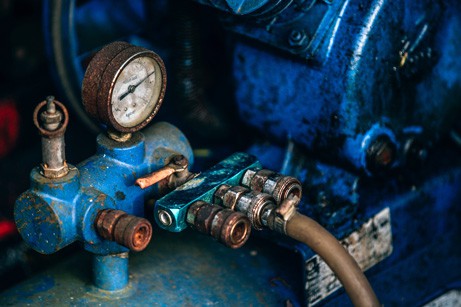First things first, an air receiver is a type of pressure vessel that stores compressed air. It’s commonly used in industrial settings to power pneumatic tools and machinery. Working with an air receiver can be dangerous if not done properly, so it’s essential to follow safety guidelines to avoid accidents and injuries.
Here are some safety tips to keep in mind when working with air receivers:
- Familiarise yourself with the air receiver
Before you start working with an air receiver, take the time to familiarise yourself with its design and function. Make sure you understand how it works and how it should be maintained. It’s also important to be aware of any warning labels or safety precautions that may be posted on or near the receiver.
- Wear appropriate safety gear
When working with an air receiver, always wear appropriate safety gear, such as safety glasses, gloves, and hearing protection. Compressed air can be dangerous if it’s released suddenly, so it’s important to protect yourself from any flying debris or noise.
- Follow proper lockout/tagout procedures
Lockout/tagout procedures are used to prevent unexpected startup or release of stored energy in machinery or equipment. Before working on an air receiver, always follow proper lockout/tagout procedures to ensure that the receiver is completely shut off and all stored energy is released.
- Check for leaks and damage
Regularly inspect the air receiver for leaks, cracks, or other damage. If you notice any issues, don’t try to repair them yourself. Instead, contact a qualified professional to perform the necessary repairs.
- Use proper lifting techniques
Air receivers can be heavy and awkward to lift. To avoid back injuries or other strains, always use proper lifting techniques when moving the receiver. If you’re unsure how to lift it safely, ask a coworker or supervisor for assistance.
- Don’t tamper with safety valves
Safety valves are designed to release pressure if it exceeds the maximum level. It’s essential not to tamper with these valves, as doing so can cause the air receiver to rupture or explode. If you notice that a safety valve isn’t working properly, report it to your supervisor immediately.
- Release pressure before maintenance
Before performing any maintenance or repairs on an air receiver, it’s essential to release all stored pressure. Failing to do so can result in serious injury or death. Always follow proper lockout/tagout procedures to ensure that all pressure has been released before starting any work.
- Don’t use damaged or worn-out equipment
Using damaged or worn-out equipment can be hazardous, especially when working with an air receiver. Always inspect your tools and equipment before using them and don’t use anything that appears to be damaged or worn out.
- Don’t exceed maximum pressure ratings
Every air receiver has a maximum pressure rating that should never be exceeded. It’s essential to know the maximum pressure rating of the receiver you’re working with and to never exceed it. Doing so can cause the receiver to rupture or explode, which can result in serious injury or death.
- Keep the area around the air receiver clear
Finally, it’s essential to keep the area around the air receiver clear and free of clutter. This can help prevent accidents and injuries by providing a clear path for workers to move around the receiver. It’s also important to keep the receiver in a well-ventilated area to prevent the buildup of hazardous gases or fumes.
So there you have it, my friends. These are some professional safety tips to keep in mind when working with air receivers. Remember to always prioritise safety and follow proper procedures to avoid accidents and injuries. Stay safe out there!
Cheers,

![]()






